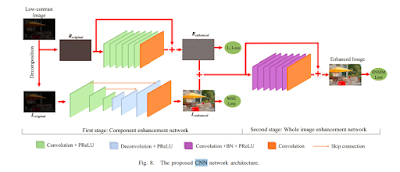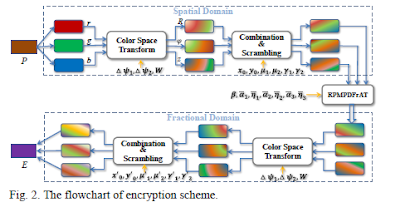Learning a Deep Single Image Contrast Enhancer from Multi-Exposure Images
Aim: To build a dataset to learn a powerful CNN-based SICE enhancer from multi-exposure
images.
Proposed system: propose to use the convolutional neural network (CNN) to train a single image contrast enhancement (SICE) enhancer. A CNN can be easily trained as the SICE enhancer to improve the contrast of an under-/over-exposure image.
Advantage:
- CNN based SICE method learns a complex nonlinear mapping function to map a low-contrast (either underexposure or over-exposure) region to a good contrast region.
- powerful CNN-based SICE enhancer, which is capable of adaptively generating high quality enhancement result for a single over-exposed or underexposed input image.
Existing System: Previous SICE methods adjust the tone curve to correct the contrast of an input image. often fail in revealing image details because of the limited information in a single image.
- state-of the-art SICE methods,
- MEF and
- Stack-based HDR method.
Methodology:
a large-scale multi-exposure image dataset which contains low-contrast images with different exposure levels and their corresponding high-quality reference image. The constructed dataset makes end-to-end discriminative learning of high performance SICE methods possible. It also provides a platform to quantitatively evaluate, at least to some extent, the performance of different contrast enhancement algorithms. With the constructed dataset, a well-designed CNN is trained for SICE, which demonstrates significant advantagesover existing SICE methods. Our work provides a new solution to high performance SICE.
CNN:
Advantage: a CNN is trained to set the parameters of bilateral filters, which are then used to enhance an input image to a desired image edited by professional photographers. Since extra information can be learned from the external dataset. As a powerful discriminative learning method, CNN has been successfully used in many low-level vision problems such as single image super-resolution [23] and image denoising [24], where a large amount of paired training samples can be generated or simulated.
SICE: aims to improve the visibility of the scene in a given single low-contrast image. It provides a way to enhance the low contrast photographs captured from a high dynamic range scene [25].
- Advantage: the SICE method will not have such ghosting artifacts because it takes only one single exposure image as input. Due to the above reasons, SICE is more attractive and easier to implement in practice.
- Disadvantage: it is much more challenging because of the limited information in a single image. Most of the previous SICE methods are based on some assumptions on high-quality images, while they may not fully exploit the information in the input image. On the other hand, the enhancement capability of existing SICE methods is rather limited due to the limited information in a single low-contrast image [9].
Future Enhancement:
Video enhancement is another important application. To apply the proposed methods to videos, we could consider enlarging our dataset and learning an LSTM (long short-term memory) based CNN enhancer to convert the conventional videos to HDR videos.
For additional details comment below with requirements.
For additional details comment below with requirements.




Comments
Post a Comment